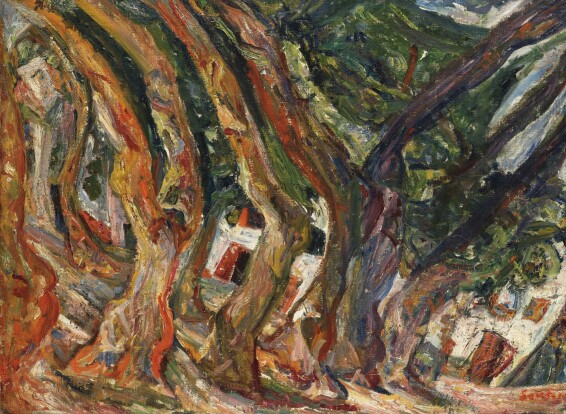- 25
沙伊姆·蘇丁
描述
- Chaïm Soutine
- 《塞雷的梧桐樹》
- 款識:畫家簽名 Soutine(右下)
- 油彩畫布
- 53.5 x 72.5 公分
- 21 x 28 1/2 英寸
來源
G. Pardo de Leygonier, Paris
Estudio Actual, Caracas
Galerie Beyeler, Basel (acquired from the above in 1970)
Private Collection, Switzerland (acquired in 1971. Sold: Sotheby's, London, 19th June 2007, lot 23)
Purchased at the above sale by the present owner
展覽
Céret, Musée d'Art Moderne, Soutine. Céret 1919-1922, 2000, illustrated in colour in the catalogue (titled Les Platanes à Céret, Place de la Liberté and as dating from 1919)
出版
Maurice Tuchman, Esti Dunow & Klaus Perls, Chaïm Soutine. Catalogue Raisonné, Cologne, 1993, vol. I, no. 56, illustrated in colour p. 169
拍品資料及來源
Maïthé Vallés-Bled wrote about the present work: 'A solid composition places the gnarled trunks firmly on the sloping ground. The general movement of the construction is given by the diagonals of the thick branches on the left, bending at an angle towards the slope. The trees therefore cannot resist the winds and other climatic aggressions. Had the angle been drawn in the other direction, downhill, their balance would have been upset and they would have inevitably toppled over. This is precisely what is happening on the right-hand side of the painting where the inverted diagonals of the tree-trunks and branches collide and upset the initial balance. The trees here have the same symbolic weight, the same evocative power as the little toppled figures present in his landscapes' (M. Vallés-Bled in Chaïm Soutine (exhibition catalogue), op. cit., p. 158).

